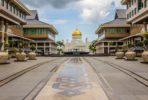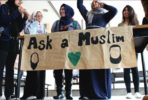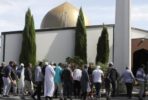New strata villas at Jalan Haji Alias are the latest Islamic-endowed properties to be launched by Warees Investments, the real estate development arm of the Islamic Religious Council of Singapore (Muis).
The 30,450 sq ft land parcel off Sixth Avenue was bequeathed in 1905, and also houses the 110-year-old mosque, Masjid Al-Huda.
Known as wakaf properties, developments such as this are built on land bequeathed or willed by a Muslim towards religious or charitable uses.
They now include serviced apartments, cluster housing, commercial buildings, and a heritage centre.
Here are five things you may not have known about wakaf in Singapore.
1. Long history in Singapore
This practice of religious endowment originated in the Middle East, where it is known as waqf. It was introduced to Singapore by Arab traders almost 200 years ago.
The first wakaf documented in Singapore was created in 1820. The Omar Mosque off Havelock Road was endowed by Yemen-born businessman Syed Omar Ali Aljunied. The mosque is also the oldest one in Singapore.
Many wakaf were given by Arab and Indian Muslim merchants, and a number of important wakaf were established in the 19th century. The number of new wakaf have dwindled in recent years.
2. Wakaf properties
There are more than 100 wakaf properties, according to Muis. Most are managed by Muis, while a number are managed by trustees. The properties were valued at $584 million as of December 2013.
They include:
Residential properties at Duku Road, Telok Indah
Serviced apartments at Somerset Bencoolen
Commercial properties at Dunlop Street, Kandahar Street, Pagoda Street, South Bridge Road, Telok Ayer Street, Temple Street, Changi Road, North Bridge Road, Upper Dickson Road and Joo Chiat Road.
Wakaf mosques such as Masjid Haji Md Salleh, Masjid Khalid, Masjid Khadijah, Masjid Kassim and Masjid Bencoolen.
The Chancery Residence, cluster housing at Chancery Lane
Madrasah Al-Maarif Al-Islamiah at Lorong 39 Geylang
A six-storey commercial building at 11 Beach Road which Muis bought in 2001
3. Where does the money go?
Last year, Muis gave $2.17 million to 60 beneficiaries. The largest beneficiaries are mosques, says Muis. Sixty-two per cent of wakaf funds are distributed to them, and 9 per cent to madrasahs.
Other beneficiaries are the poor and needy, as well as charitable organisations. Some funds are disbursed to foreign countries according to the donors’ wills.
4. Revitalisation of wakaf land
Warees Investments – the real-estate development arm of Muis – was set up in 2001 to find ways to enhance the value of wakaf land.
In recent years, it has embarked on a wakaf revitalisation scheme to rejuvenate properties in its care.
Its first project under the scheme is the Red House Bakery in Katong, which philanthropist Sheriffa Zain Alsharoff Mohamed Alsagoff put in trust in 1957.
The integrated heritage development project, called The Red House, will consist of 42 residential units and six shophouses. It will be completed in 2016.
The Alias Villas are the second project to be unveiled. There will be another project in the city centre, Warees told The Straits Times in an interview in 2013.
5. Overseas expansion
Warees signed a memorandum of understanding with property management firm CPG Facilities Management in 2005 to explore joint-venture opportunities abroad. It is offering its property management and development services to Muslim countries in the region and the Middle East.
Source: www.straitstimes.com







